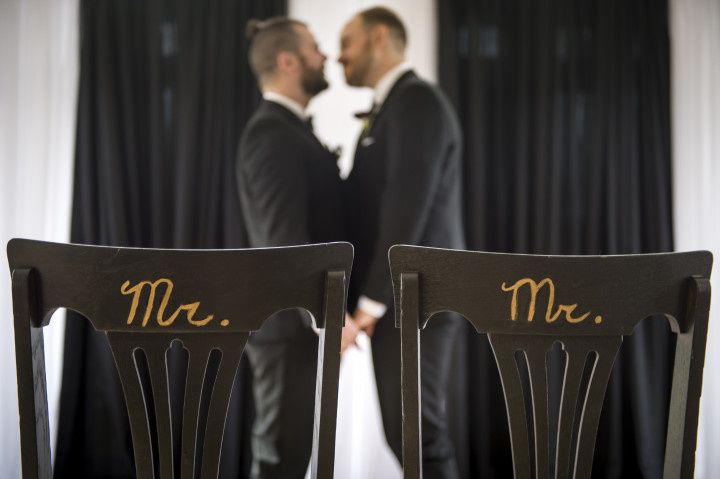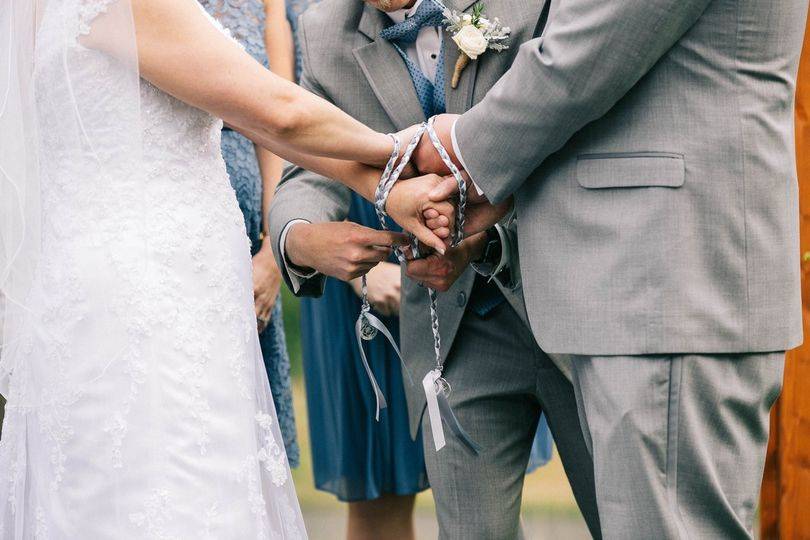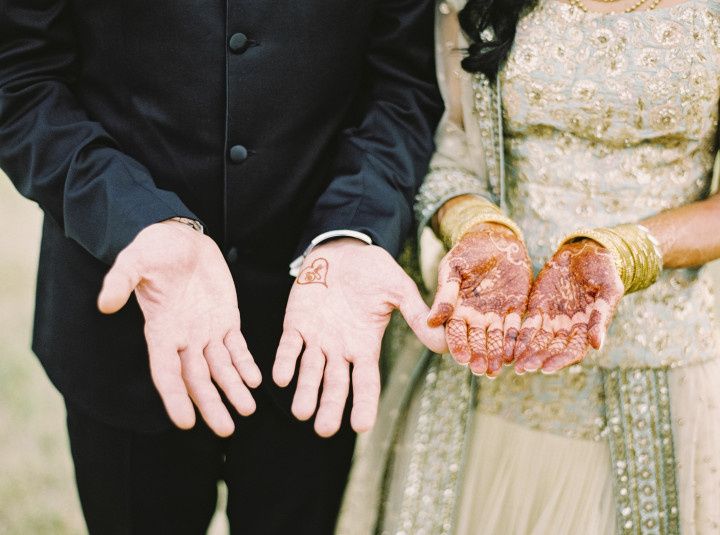17 Popular Wedding Unity Ceremony Ideas and What They Symbolize
To help you choose exactly which wedding unity ceremony idea is right for you, we're breaking down the history and symbolism for some of the most popular options.
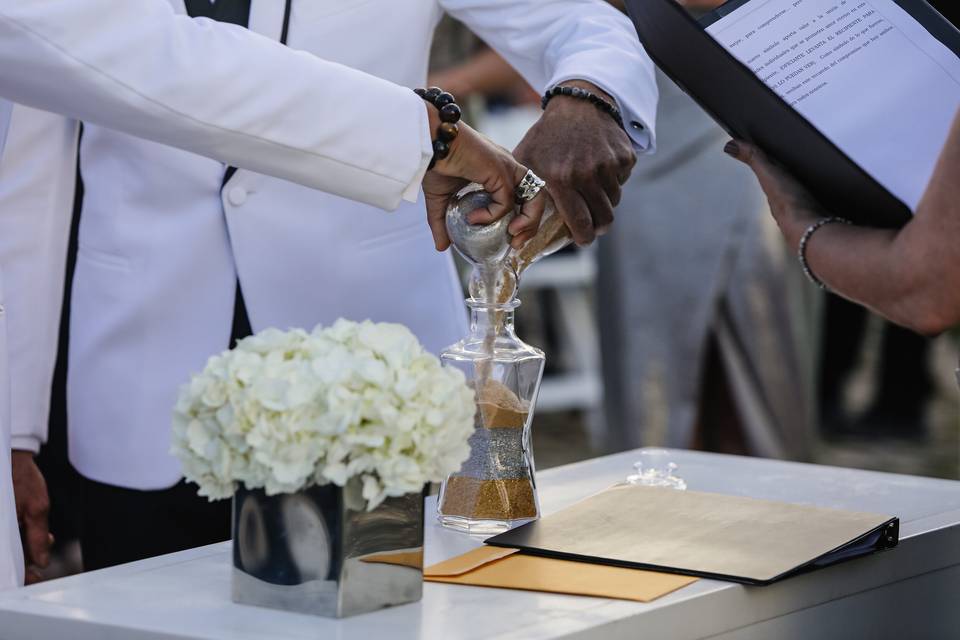
Whether you're researching wedding unity ceremony ideas for religious or cultural reasons, or you're simply looking for unique ways to personalize your wedding vows, there are a handful of unity ceremony ideas that you can consider incorporating into your big day. Some of these popular wedding rituals have religious origins, while other unique unity ceremony ideas are easily adaptable for secular and non-denominational weddings. You might already be familiar with some of the more common options—such as lighting a unity candle, sand ceremony, or breaking a piece of glass—but this guide will ultimately help you choose the best one when you're tying the knot. Keep reading to learn more about the most popular unity ceremony ideas and their meanings.
When should you do your unity ceremony?
It's important to remember that the exact order of your wedding ceremony will depend on your religion, culture, and personal preferences. Most unity rituals are performed after your officiant's remarks, shortly before you exchange vows and wedding rings, which is then followed by the celebratory first kiss.
Who should you include in your unity ceremony?
Certain wedding ceremony unity ideas will always include family members and loved ones, especially during cultural or religious ceremonies. For secular and non-denominational unity rituals, who you include is entirely up to you. If you and/or your partner have children and you're merging families together, it's common to include your children in the unity ceremony as well.
Religious Wedding Ceremony Ideas
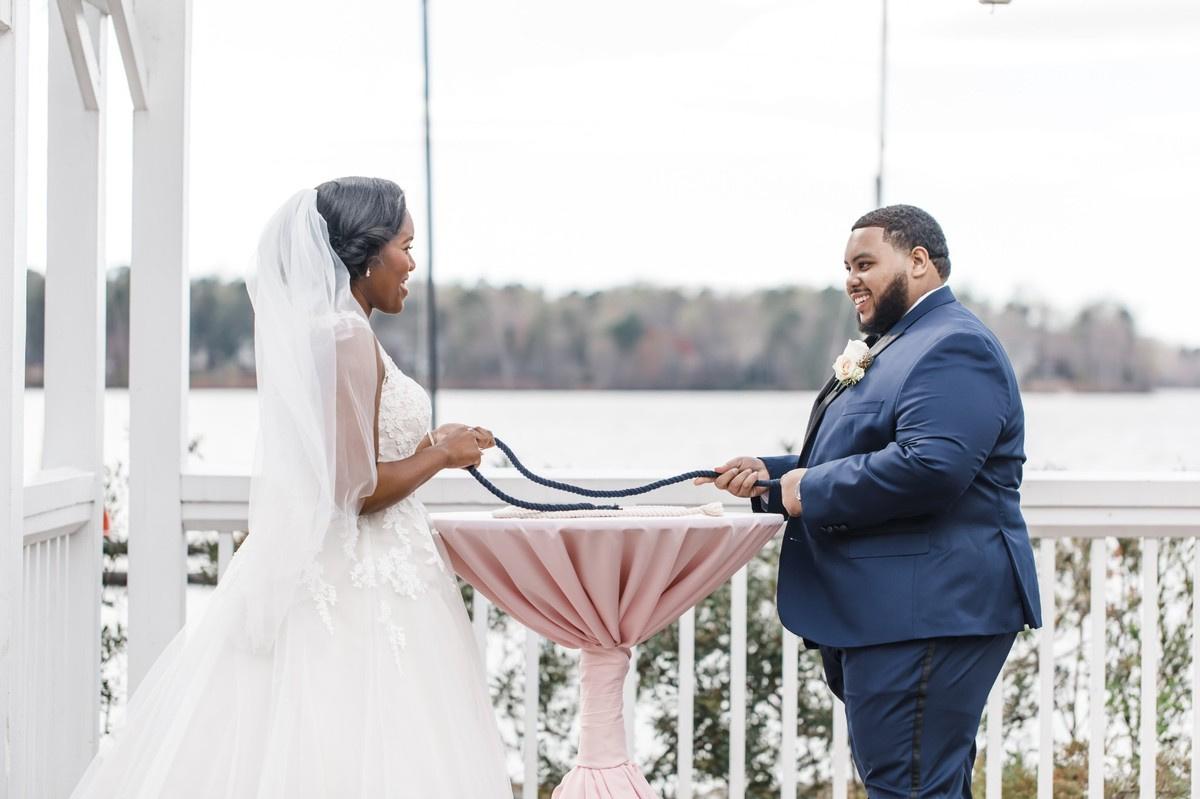
Cord of three strands
This popular wedding ceremony ritual has Biblical origins. As described in Ecclesiastes 4:12, the cord of three strands (also known as God's knot) is the most difficult cord to destroy or tear apart. The three strands represent you, your partner, and God joining as one. You can use loose cords of any kind for this ritual, but if you want to turn the braid into a keepsake after your wedding day, you can easily find decorative unity boards made especially for this tradition on sites like Etsy and Amazon.
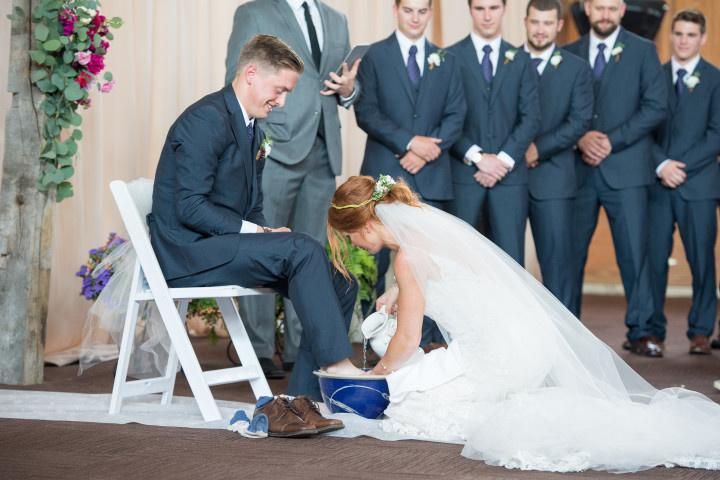
Foot washing ceremony ritual
Foot washing is a Christian wedding ceremony ritual inspired by the Bible verses John 13: 1-17 in which Jesus washes his disciples’ feet. It is usually done to symbolize the couple's service, humility and commitment to each other.
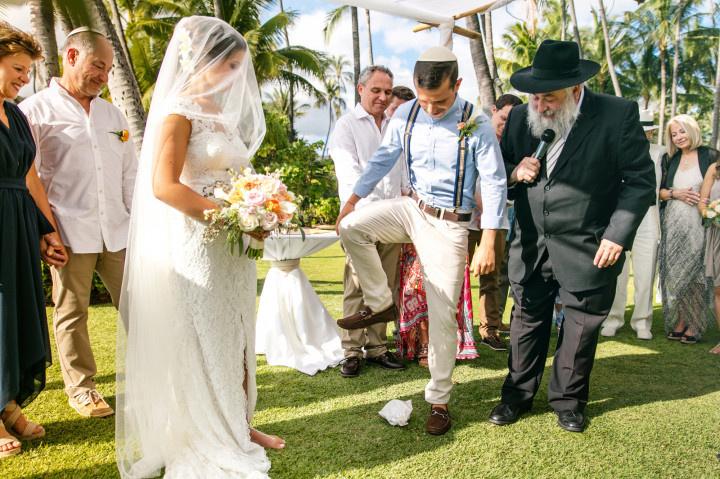
Breaking the glass
This Jewish wedding tradition takes place after the rabbi announces the newlyweds as a married couple. The groom smashes a wrapped piece of glass with his foot, which is followed by applause and a cheer of "Mazel tov!" from the guests. Tradition says that the couple will remain married for as long as the glass is shattered, while others believe it symbolizes the destruction of the Temple in Jerusalem.
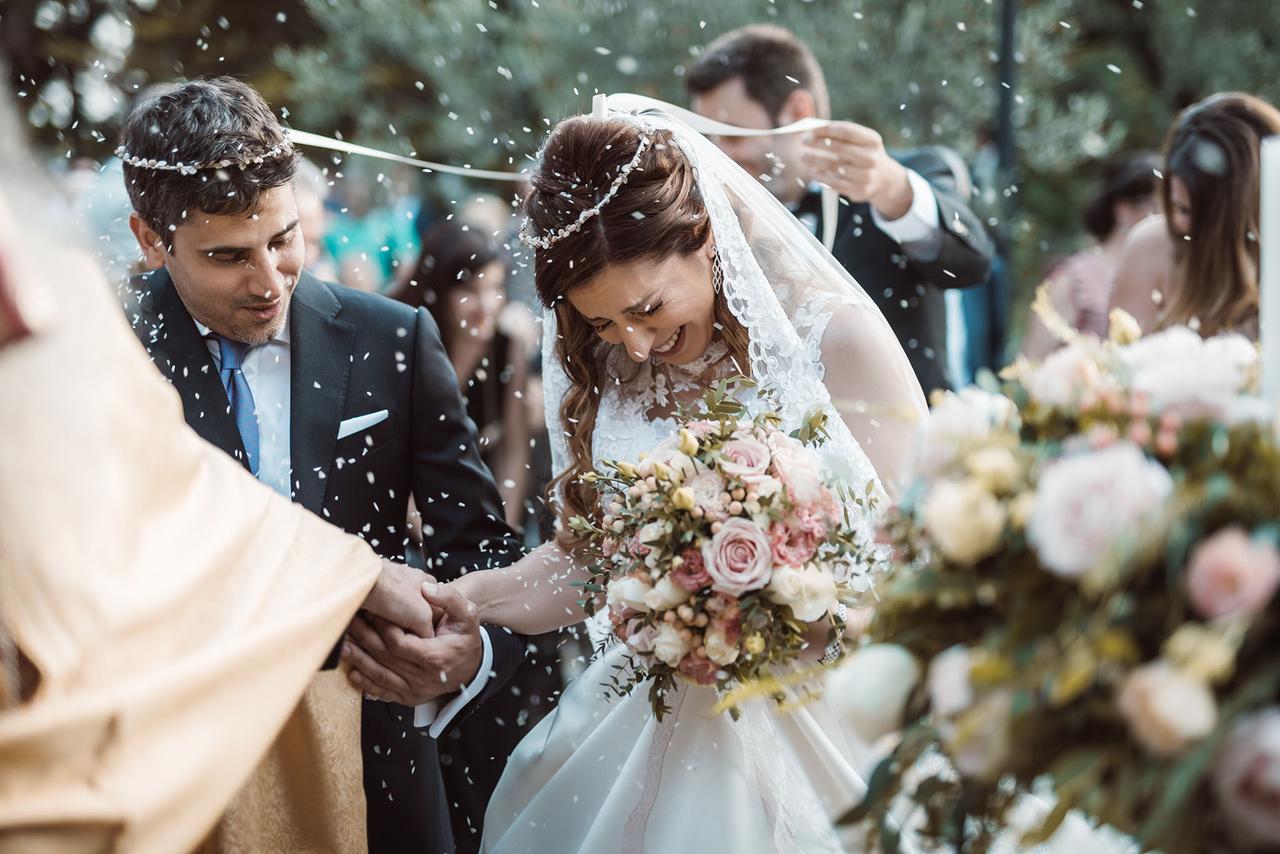
Stefana crowns
At Greek Orthodox weddings, the stefana crowns are almost more important than your actual wedding rings. During the ceremony, crowns are placed on the couple's heads by the priest, accompanied by blessings. The crowns are then interchanged between the couple three times before being tied together with ribbons to symbolize an official unbreakable union.
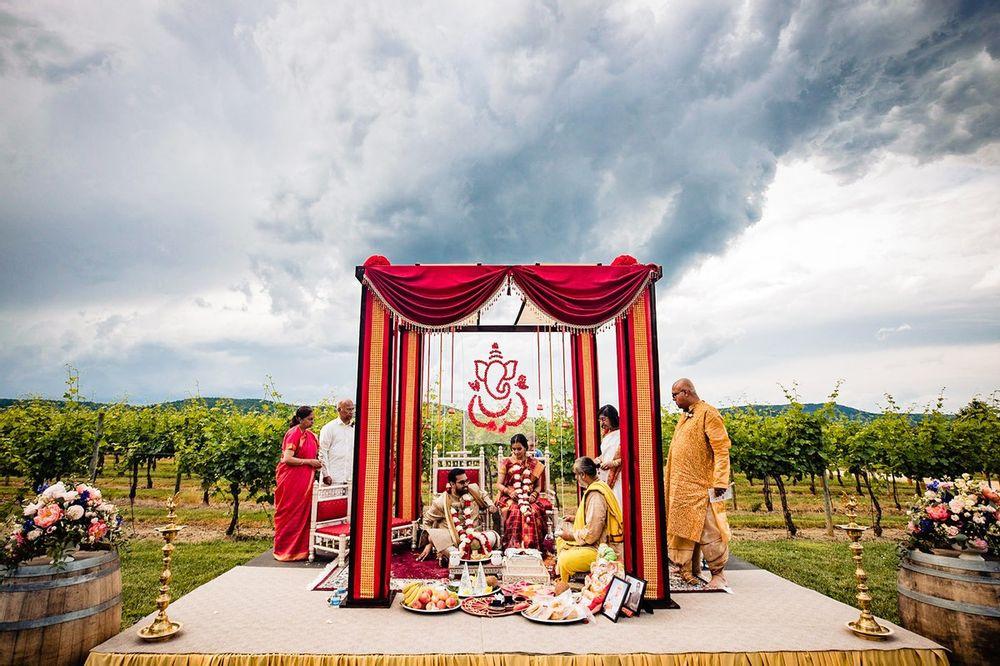
Saptapadi
This wedding unity ceremony idea is a performed at most Hindu weddings. The saptapadi, which means seven steps and resembles the seven vows of marriage in Hinduism, takes place around a sacred fire beneath the mandap—a square structure that is usually lavishly decorated with fabric and flowers. While holding hands, the couple walk seven steps around the fire, alternating who leads. Upon completing the steps, the couple are officially married.
Cultural Wedding Unity Rituals
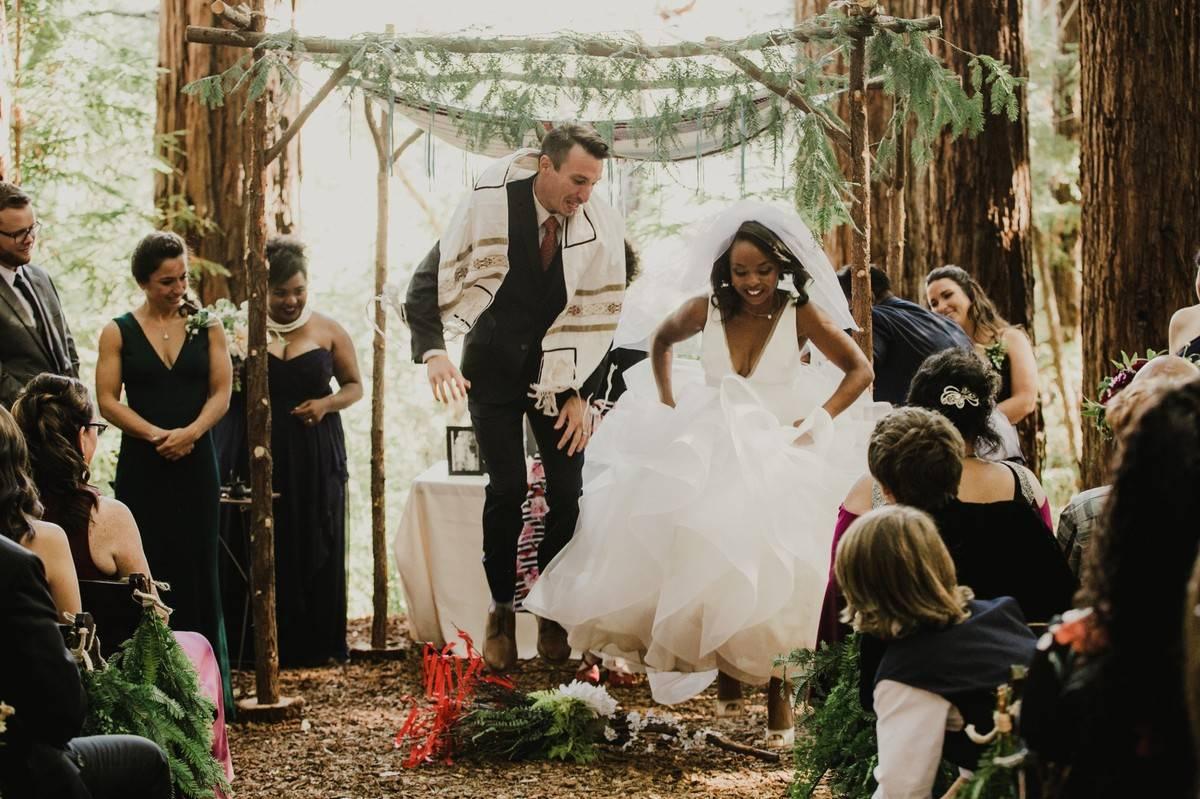
Jumping the broom
This tradition dates back to the 1800s and is believed to have origins in western African weddings and Wiccan communities. Jumping the broom takes place at the very end of the wedding ceremony, after the officiant pronounces the couple as officially married. The newlyweds jump over a broomstick before the recessional to symbolize sweeping away their old lives and welcoming their new life together.
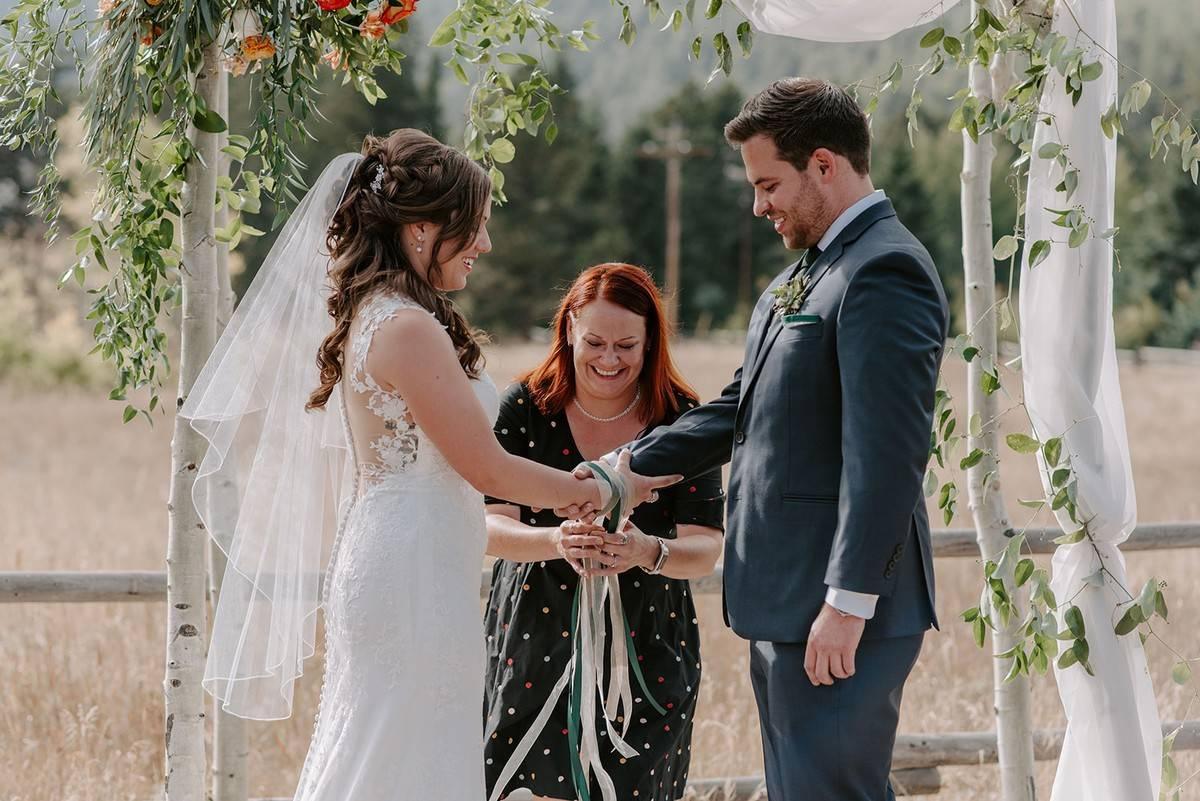
Handfasting unity ceremony
The handfasting ceremony tradition is a Celtic wedding ritual with medieval roots. It involves binding the couple’s hands together with ribbons or cords to symbolize their union. In the middle ages, handfasting was used in place of a marriage license before weddings were recognized as legal responsibilities of the government and church. Each colored cord has its own meaning, such as white for purity or red for passion.
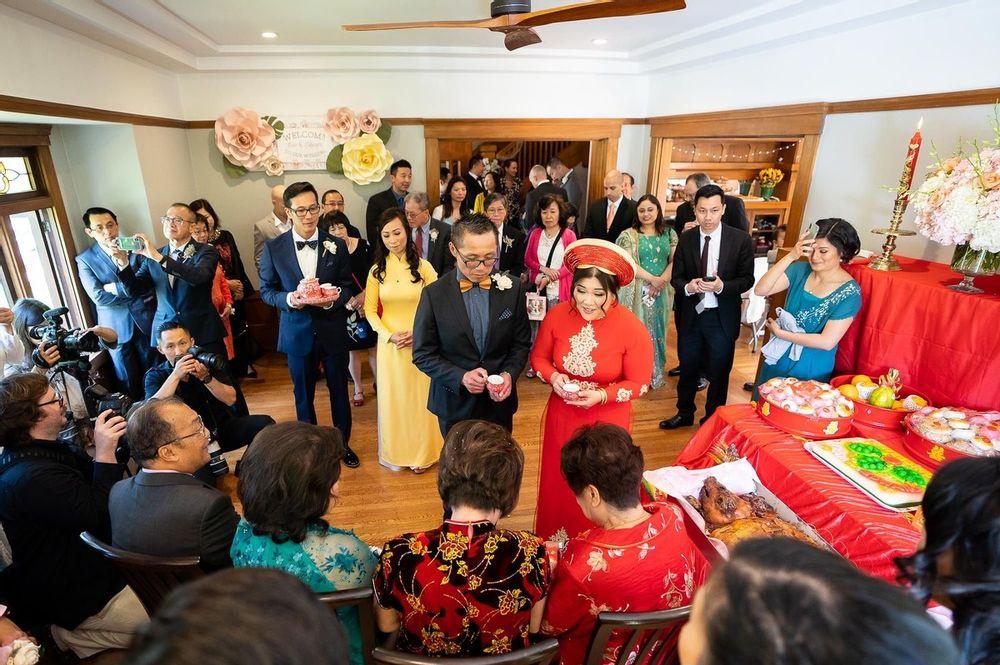
Chinese tea ceremony
During the Chinese tea ceremony, the couple pours cups of tea and presents them to parents and important family members, such as parents and grandparents. This symbolizes two families coming together as one and typically takes place in private before the actual wedding, with close relatives in attendance.
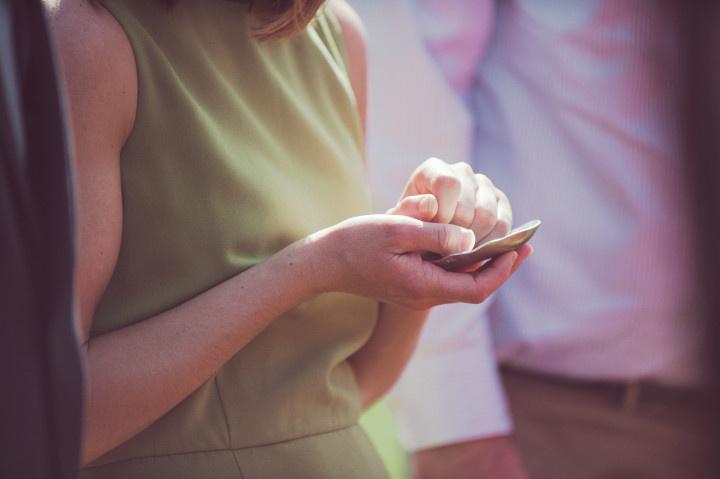
Ring warming ceremony
Believed to be an Irish or Gaelic wedding ceremony tradition, the warming of the rings takes place when the couple’s wedding bands are passed around by guests during the ceremony. Each person is asked to briefly hold the rings in their hands while also saying a short, silent prayer for the couple (if desired). The rings are returned to the couple with blessings and positive energy for a long, happy marriage.

Burying the bourbon tradition
Burying the bourbon is a Southern tradition that’s said to prevent rain or bad weather on your special day. Exactly one month before your wedding, dig a hole at your ceremony site and bury an unopened bottle of bourbon (make sure that it’s upside-down). According to the superstition, you’ll have sunny skies for your wedding day! Right after you and your spouse say “I do,” dig up the bottle and enjoy. While we’re not positive that this works, we can't argue that it makes for a priceless photo op.
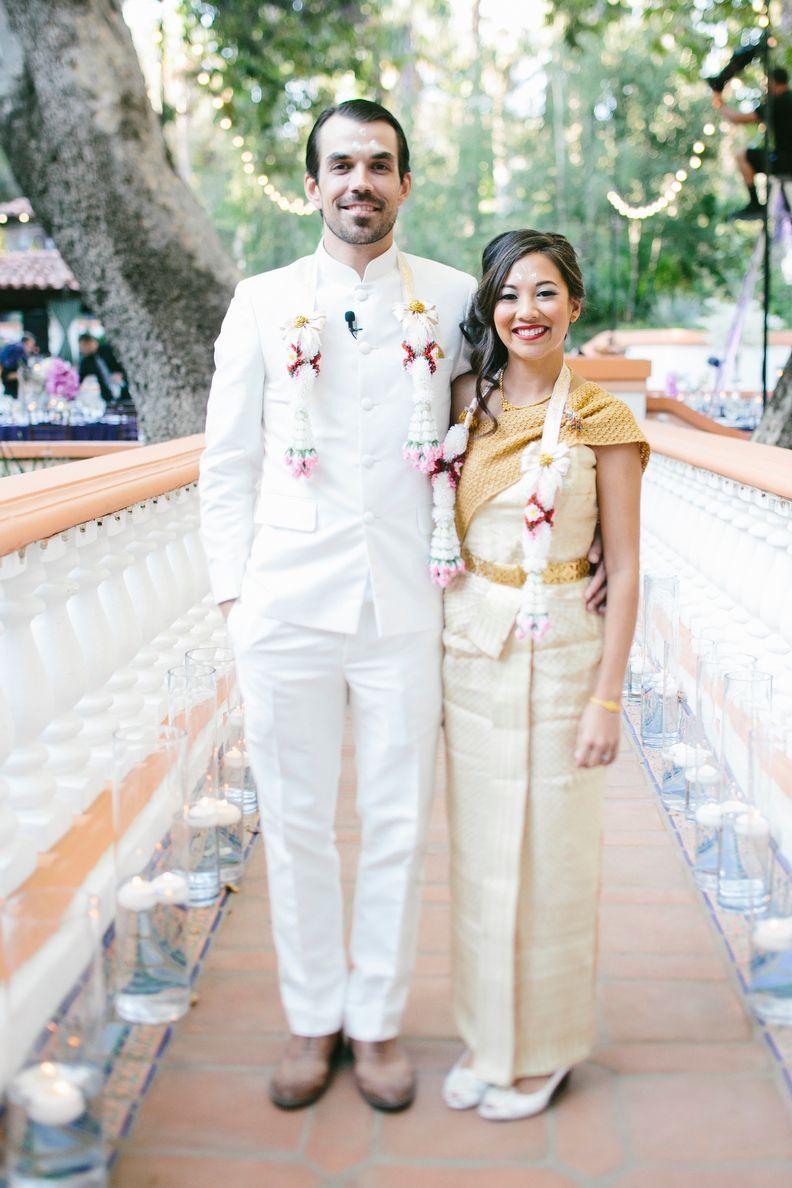
Water pouring ceremony
The water pouring ceremony is considered a symbol of good luck at Thai weddings. During this unity ritual, the couple are seated at a table and presented with headdresses or crowns, typically with a cord connecting the two of them. The couple then position their hands with their palms together and place them over trays to catch the water. Using a conch shell, their elder relatives take turns pouring blessed water over the couple's hands.
Secular Wedding Unity Ceremony Ideas
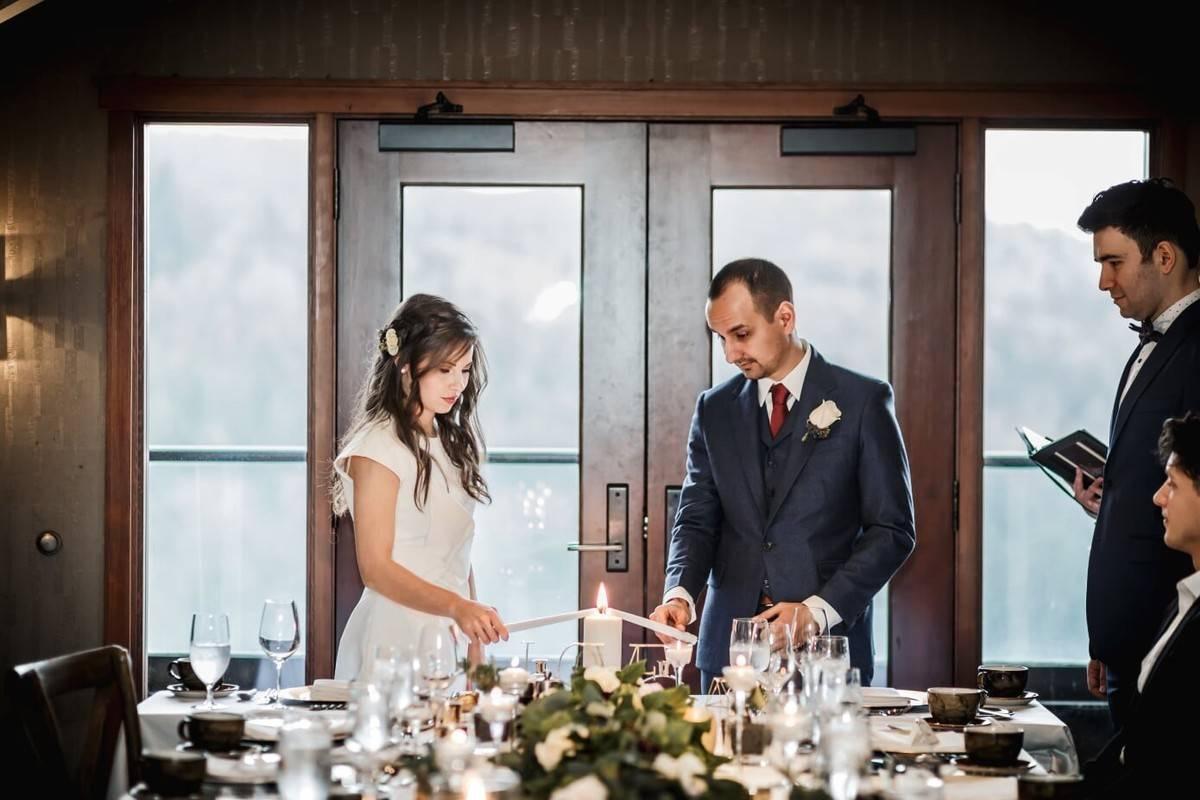
Unity candle ceremony
The wedding ceremony ritual of lighting a unity candle, which began about 30 or 40 years ago, represents the joining of two people and their families. Before the parents from both sides take their seats, they (traditionally the mothers) each light a taper candle and place it next to a pillar candle that remains unlit throughout the ceremony. After the couple exchanges their vows, they light the pillar candle using the flames from the taper candles, signifying several generations of commitment.
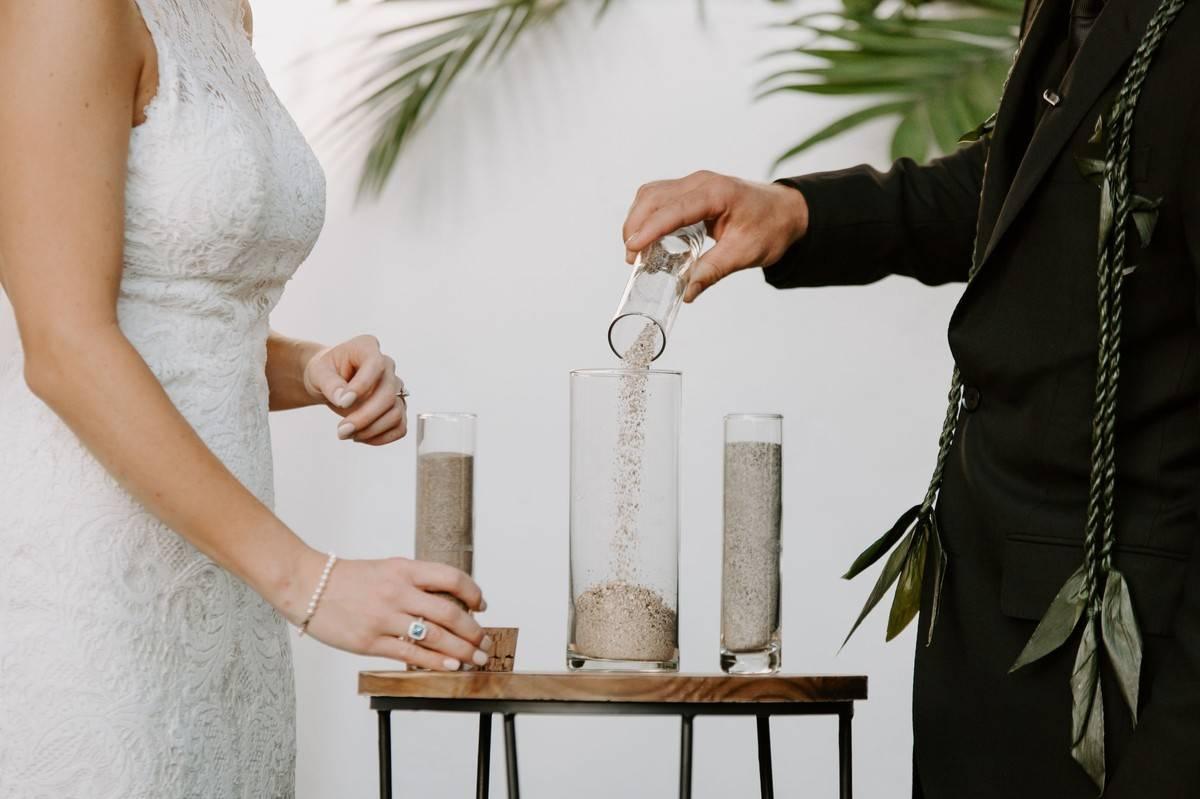
Sand pouring ceremony
The exact origins of this tradition are fuzzy, but sand pouring is one of the most popular wedding ceremony rituals around today. For this idea, the couple pours two separate vases of sand (usually in different colors) into the same vessel, creating a layered, one-of-a-kind pattern. From that point forward, it will be impossible to ever separate the colors, which represent the blending of two people forever. Many couples personalize this ritual by using sand from meaningful locations, and it's especially popular for beach weddings and destination weddings.
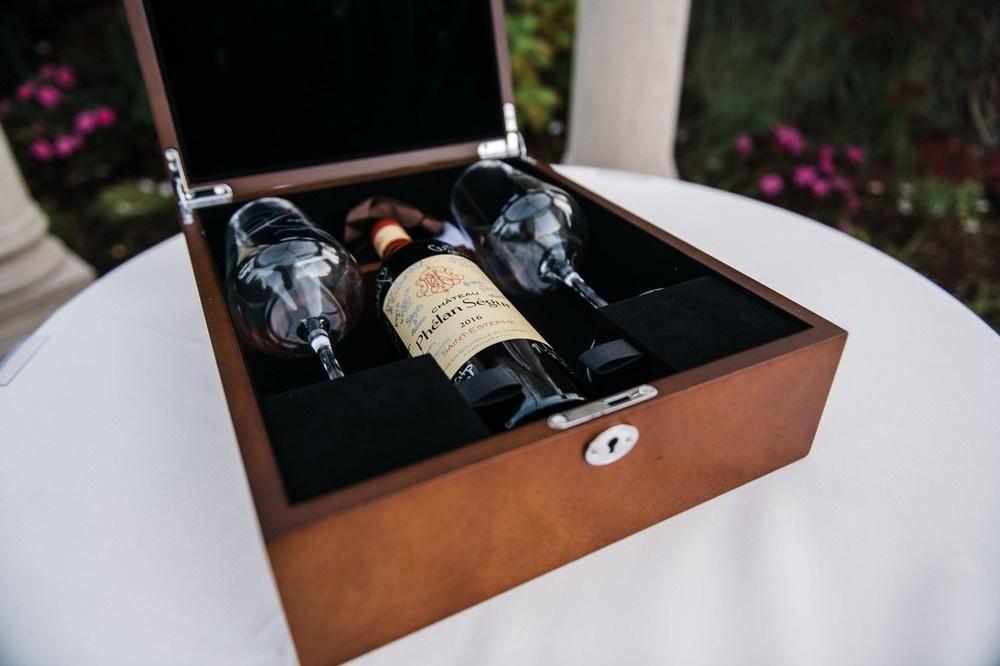
Wedding ceremony time capsule
This is a newer wedding ceremony ritual, but we love the romantic notion behind it. Before the wedding, you and your spouse write love letters to each other and then seal or lock them inside a box during the ceremony. Traditionally, the letters are accompanied by a bottle of your favorite wine or champagne—and any other mementos you want to save as a keepsake. You'll eventually open the wine box or time capsule at a later date, such as an anniversary or life milestone.
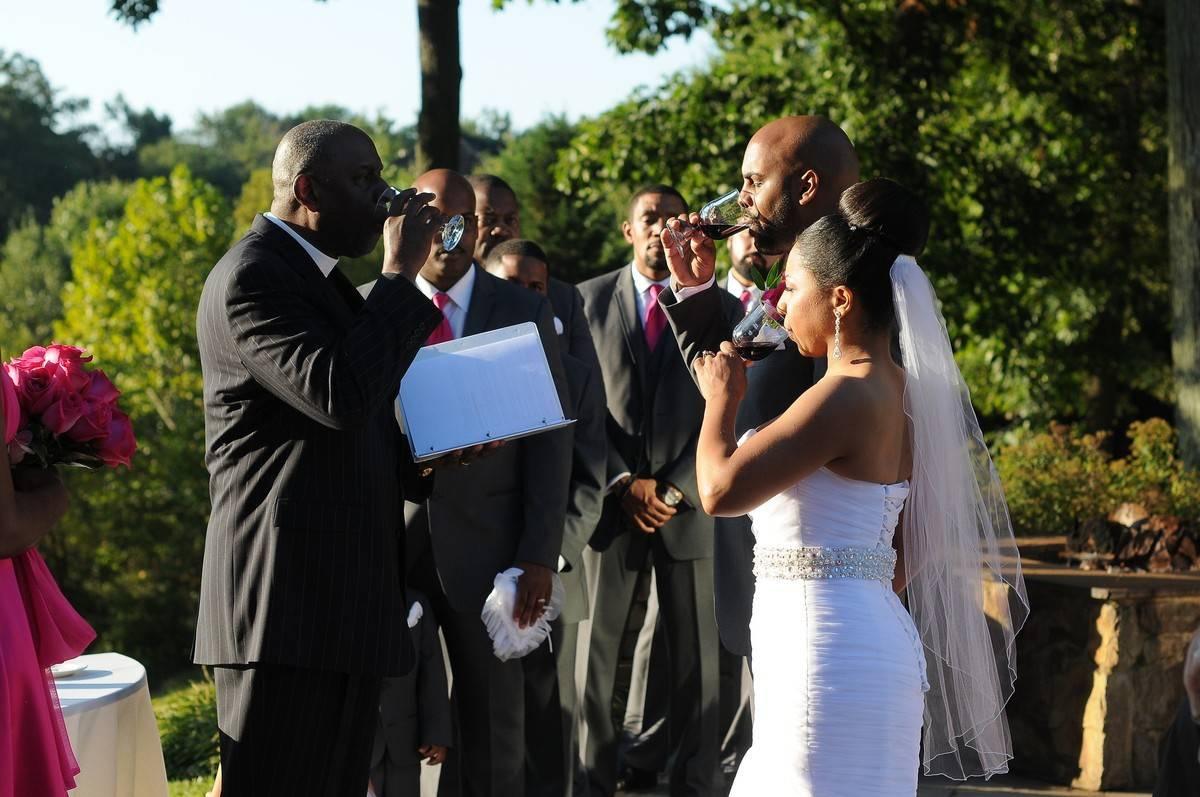
Bottle of wine unity ceremony
Wine has been a symbol of life and prosperity for centuries. There are several variations of using wine during a wedding, especially at religious ceremonies, but a common option is to have two small carafes of wine, one white and one red. After exchanging rings, the couple pours the wines into a third carafe, creating a blend. They each take a sip of the mixed wine to represent their individual lives becoming one.

Unity tree planting ceremony
This wedding unity ceremony idea can be easily customized for any theme and personal style. It has no official religious or cultural ties, but the tradition itself symbolizes you and your spouse beginning a new life together. Taking care of your sapling tree (or whichever type of plant you choose) will remind you to nurture each other throughout your marriage, even when the honeymoon phase fades! Like flowers, trees symbolize different things—for example, cherry trees represent good fortune—so choose a type of tree that resonates with you the most. During this ritual, you and your spouse will take turns adding soil and water to the seedling.
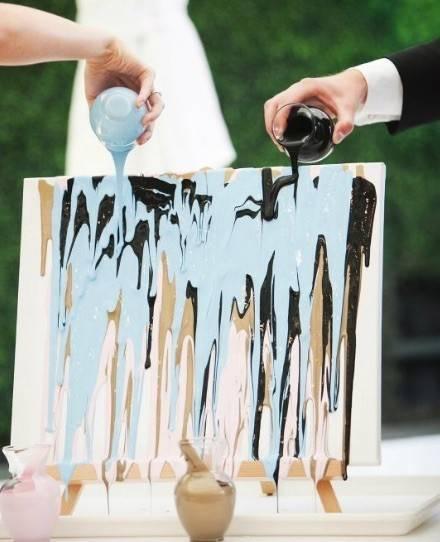
Paint pouring ceremony
If you're looking for a fun way to personalize your wedding ceremony, you'll love the paint pouring ritual. The concept is simple: you and your partner pour two different paint colors onto a blank canvas to symbolize your lives coming together as one. The end result is a one-of-a-kind piece of art that you can display in your home after you're married.


